Biblical Battles: 12 Ancient Wars Lifted from the Bible
Lifted from the bible
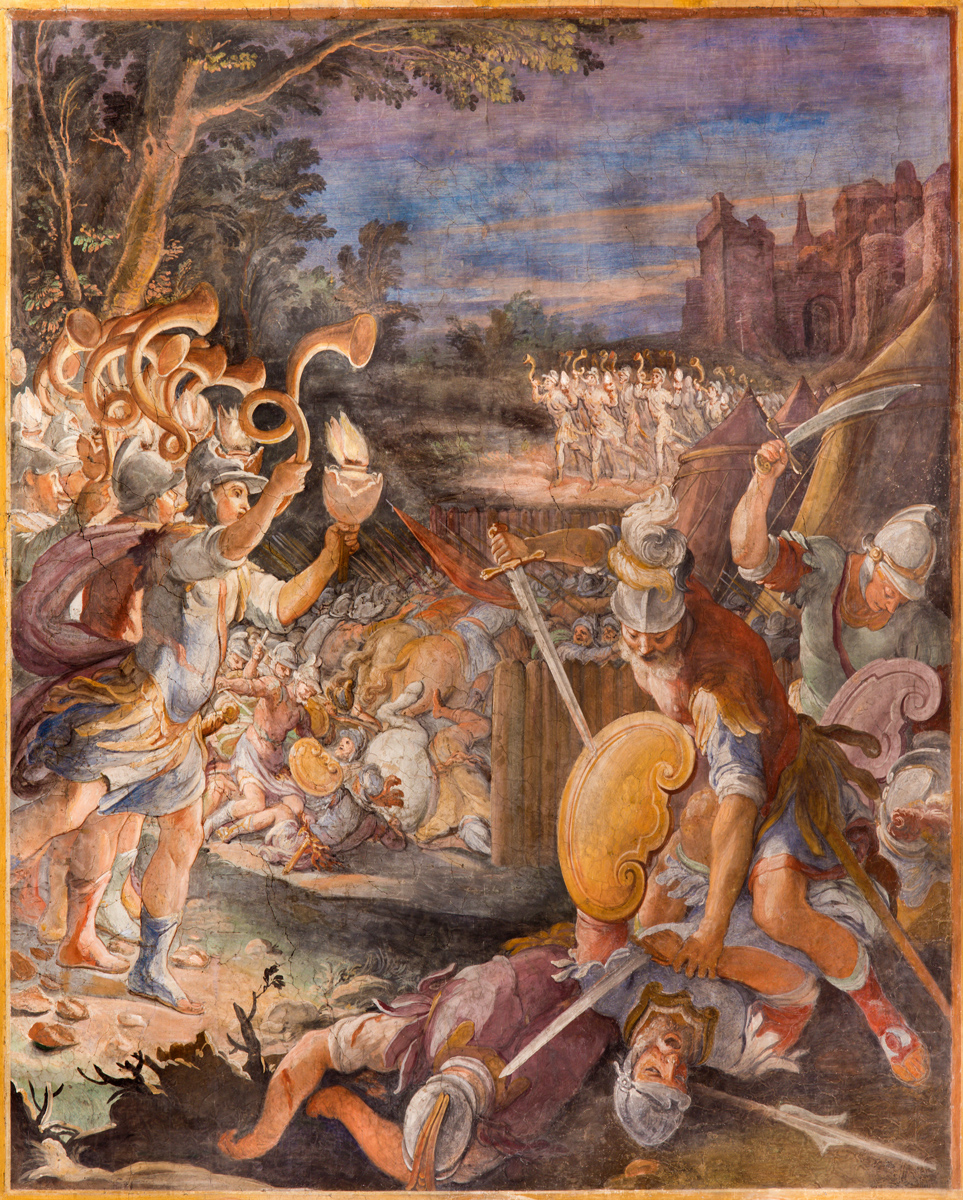
Numerous accounts of wars and battles that involved ancient Israel, Judah, Egypt, Assyria, Babylon and other powers in the region are recorded in the Bible and other ancient sources. Some of these conflicts may never have taken place, while others occurred but didn't have the results that the Bible claims. Here's a look at tales from 12 "biblical" ancient wars and battles.
Merneptah conquers Israel?

The earliest mention of the name "Israel" comes from a stele (an inscription carved on stone) that was written in the name of the pharaoh Merneptah (reign ca. 1213–1203 B.C.). In the stele, Merneptah claims to have "laid waste" to "Israel," along with other cities and kingdoms in the eastern Mediterranean. Unfortunately, the stele gives no details about what Israel was like, only that it was one of many places or people that Merneptah claimed to have conquered.
Escape from Egypt
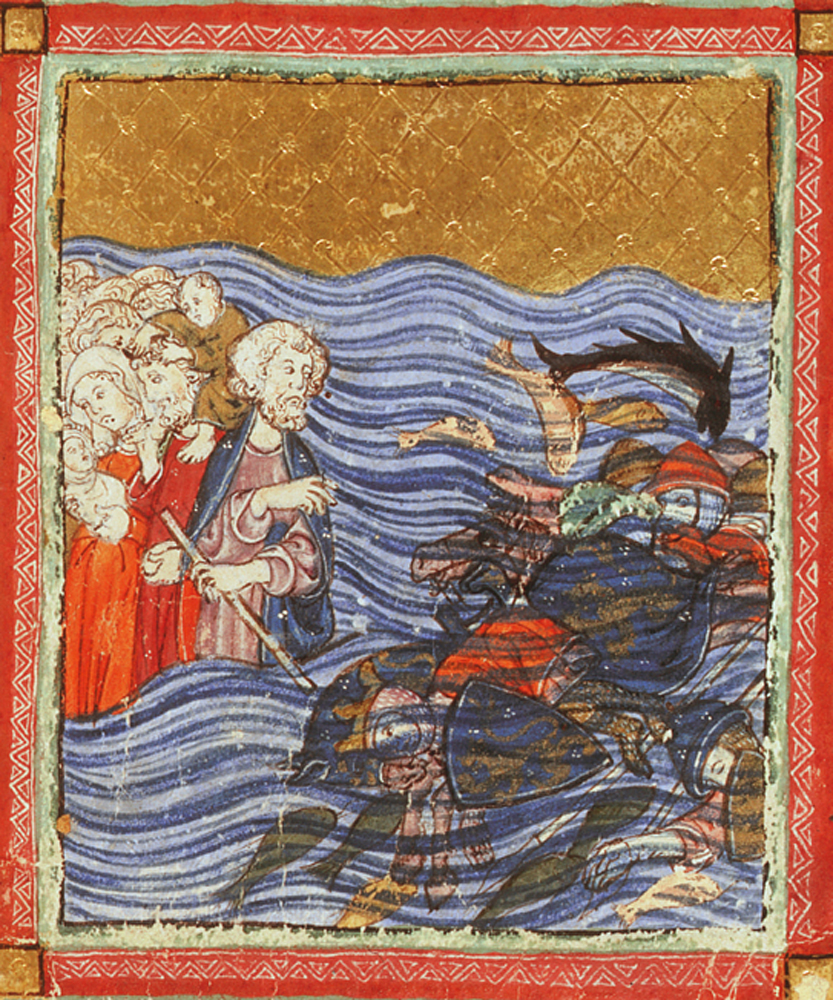
The Book of Exodus claims that the Jewish people fled from Egypt while being pursued by Egypt's army. Moses supposedly called on god to part the Red Sea, allowing the Jewish people to cross. When the Egyptian army attempted to cross the sea, it recedes, engulfing the Egyptian army in water. [The Science of the 10 Plagues]
In the story, the Egyptian pharaoh ruled from a city named Rameses, a place that archaeologists now know was Egypt's capital for a time during the later second millennium B.C. and was abandoned by 1000 B.C.
While scholars regard the parting of the Red Sea as being legendary, whether some of the Jewish people could have fled, or otherwise left, Egypt during the late second millennium B.C. is still an open question. Egyptian records do tell of groups from Asia who lived in Egypt at various times in antiquity.
Battle of Jericho

In the Hebrew Bible, Jericho is a major city that was taken after the Israelis crossed the Jordan River. The story says that the Israeli army marched around the city for seven days, blowing trumpets and carrying the Ark of the Covenant in front of the main body of the army. On the seventh day, the leader of the army, Joshua, commanded the entire army to shout and, miraculously, the walls of the city of Jericho collapsed, allowing the Israeli army to take the city.
While scholars regard the miraculous destruction of the city walls to be fictional, there is a debate as to whether an Israeli army could have destroyed Jericho during the second millennium B.C.
Archaeologist John Garstang (who lived 1876-1956) found that a large city flourished at Jericho and was destroyed around 1400 B.C.; Kathleen Kenyon (1906-1978) found that this city had been destroyed around 1550 B.C., a date that many scholars believe is too early for an Israeli army to have destroyed it.
Battle of Ai
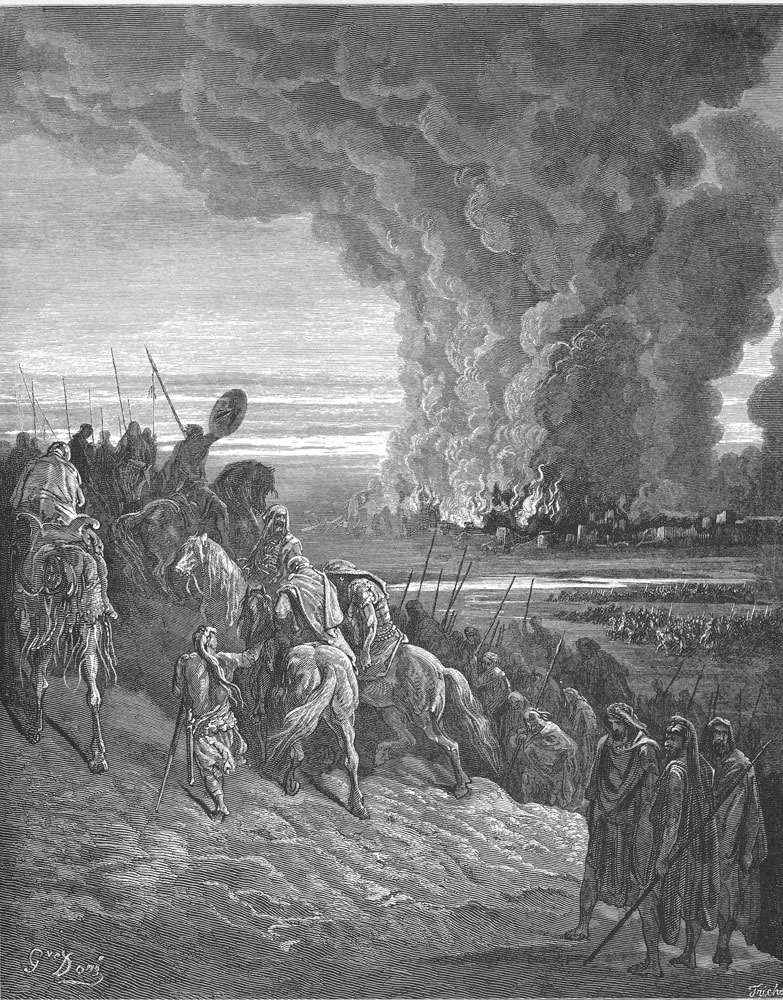
In the Hebrew Bible, the Israeli army takes the city of Ai after capturing Jericho. The Israeli leader, Joshua, splits the Israeli army into two groups: a main group that is under orders to retreat when the army of Ai attacks it and a smaller group that lies in wait near the city gates, with orders to enter the city and set it on fire once the Ai army has been lured away. In the story, the plan succeeds, and the city is plundered and destroyed.
Some archaeologists believe that the city of Ai is located at an archaeological site called et-Tell; however, archaeological excavations show that the ancient city at el-Tell was destroyed during the third millennium B.C., making it impossible that Joshua's army could have destroyed it. A few archaeologists believe Ai could be at another site called Khirbet el-Maqatir. While the debate on Ai's location is ongoing, many archaeologists now believe that the story of Ai's destruction by an Israeli force is fictional and that this battle never took place.
Battles against the Philistines
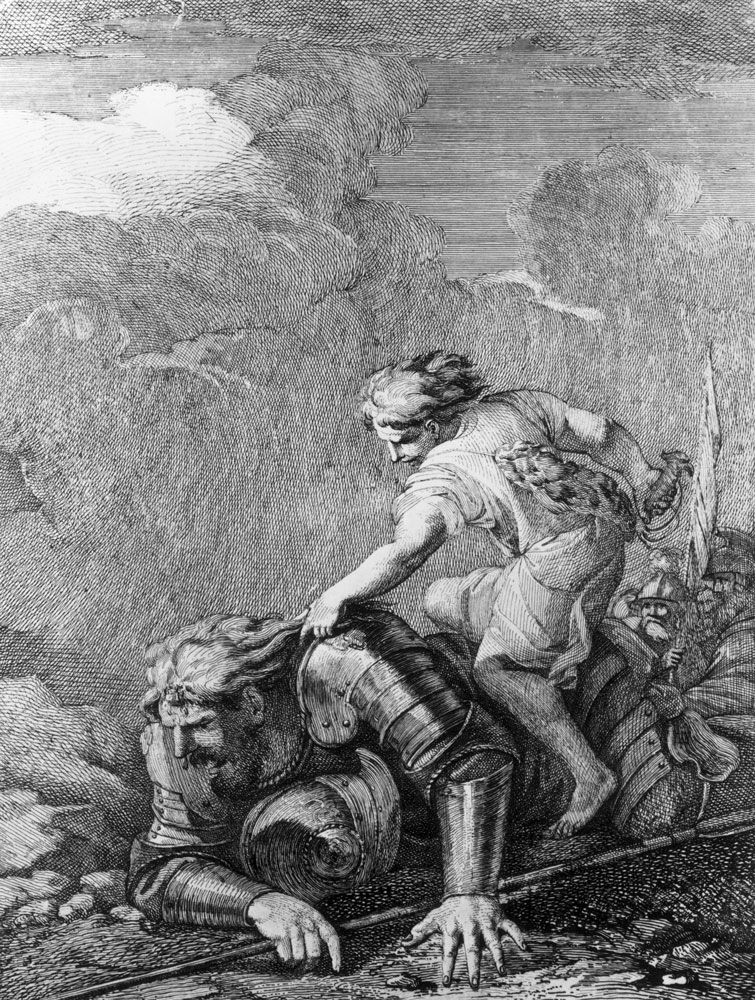
The Hebrew Bible tells of numerous battles between the Israelis and the Philistines. In one of the most famous battles an Israeli force led by David battled a Philistine force led by a giant named Goliath. David killed Goliath when a sling stone and the Israeli force won the battle.
However, the Israelis were not always successful in their battles. The Hebrew Bible claims that one battle ended in disaster with the Philistines not only routing an Israeli force but capturing the Ark of the Covenant. The Philistines later gave the Ark back to the Israelis after the Ark supposedly brought about a series of deaths and misfortunes to the Philistines.
Recently a large cemetery was discovered by archaeologists in the ancient city of Ashkelon, a city which the Hebrew Bible and other ancient texts say was under Philistine control. Analysis of the remains found in the cemetery is ongoing but researchers hope that the discovery will provide more information about who the Philistines were.
War between Israel and Judah

The Hebrew Bible claims that the kingdom of Israel split apart during the reign of King Rehoboam (who lived around 3,000 years ago). After the split, Rehoboam ruled a kingdom based at Jerusalem that was called Judah, while another Jewish state that kept the name Israel formed a separate kingdom. The Hebrew Bible claims that disputes over taxes and Corvée labor (free labor) drove apart the kingdom that formerly united the Jewish people.
The Hebrew Bible claims that Israel and Judah often fought each other, sometimes allying with different powers in the region. In their last war, Judah allied with Assyria while Israel allied with another power named Aram. This last war led to the destruction of Israel by an Assyrian force in 723 B.C.
While archaeologists and historians generally agree that two separate Jewish kingdoms existed, how they broke up or whether they were ever united is a matter of debate among scholars.
Assyrian siege on Jerusalem
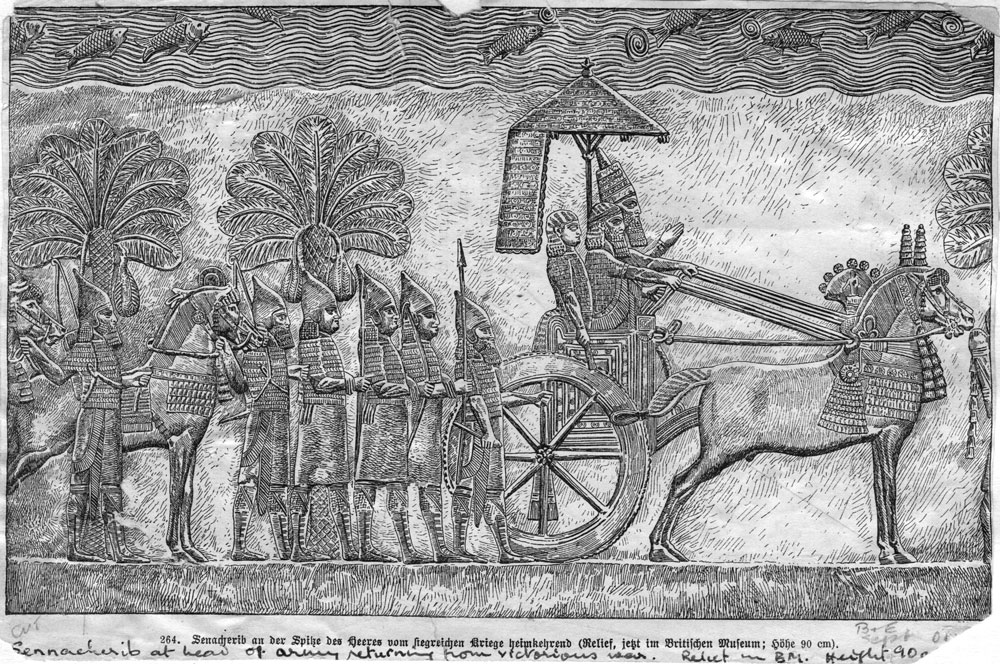
Both the Hebrew Bible and ancient Assyrian texts describe how the Assyrian king Sennacherib (reign ca. 704-681 B.C.) laid siege to Jerusalem in 701 B.C. The Kingdom of Judah, led by King Hezekiah, prepared for defense by constructing a water tunnel that connected Jerusalem with a spring outside the city (the location of this tunnel is a source of debate among archaeologists).
Both the Hebrew Bible and Assyrian texts also agree that the Assyrians didn't conquer the city, but why the Assyrian army left is unclear. The Hebrew Bible claims that after part of the Assyrian army left to battle an Egyptian force, the "angel of the lord" killed the remaining Assyrian soldiers. Assyrian records claim that the Assyrians left only after Hezekiah agreed to pay a vast tribute that included a large amount of gold, silver, ivory, elephant hides and even Hezekiah's own daughters.
Nebuchadnezzar II's conquest of Jerusalem
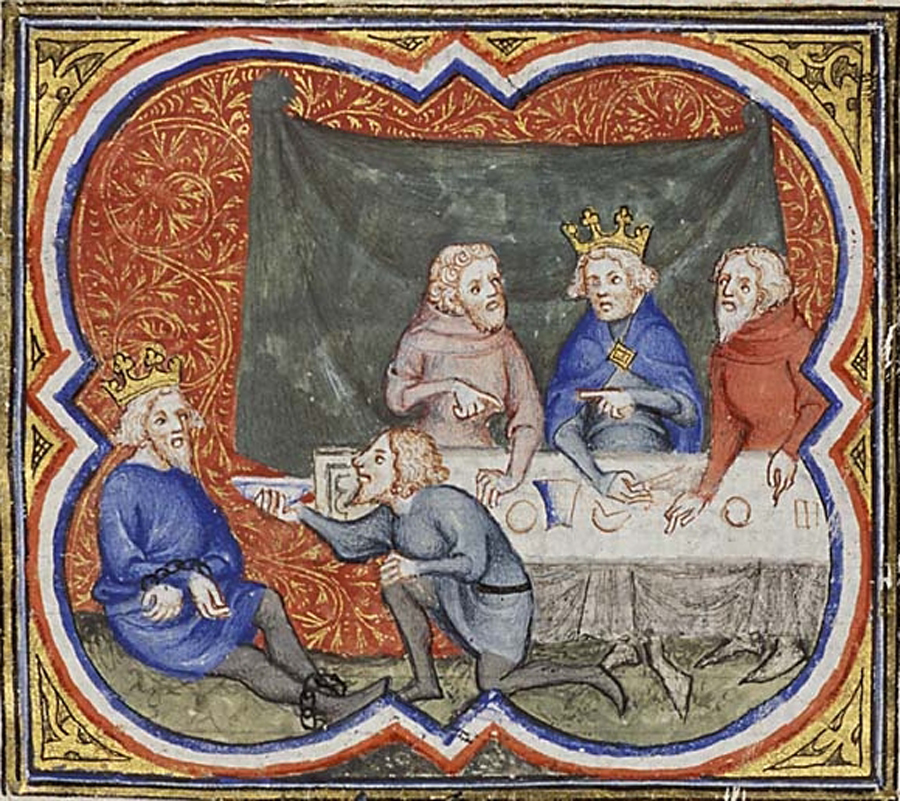
In 587 B.C., the Babylonian Empire, led by King Nebuchadnezzar II, conquered Jerusalem. The Hebrew Bible says that the Babylonian force looted and set fire to the First Temple, the holiest temple for the Jewish people. The Babylonians also tore down Jerusalem's walls, sacked and destroyed much of the city and deported much of the populace to various sites around the Babylonian Empire. The Kingdom of Judah was destroyed.
Recently, several cuneiform tablets have emerged in Iraq that describe the lives of the Jews who were exiled to Babylonia. The tablets say that some of the exiles and their descendants lived at a village called Āl-Yahūdu which means the "village of Judea." The tablets say that the exiled people who lived at Āl-Yahūdu adopted local languages and legal traditions. Many of the tablets have been purchased by private collectors from the antiquities market, raising concerns that the tablets were looted.
Battle of Megiddo
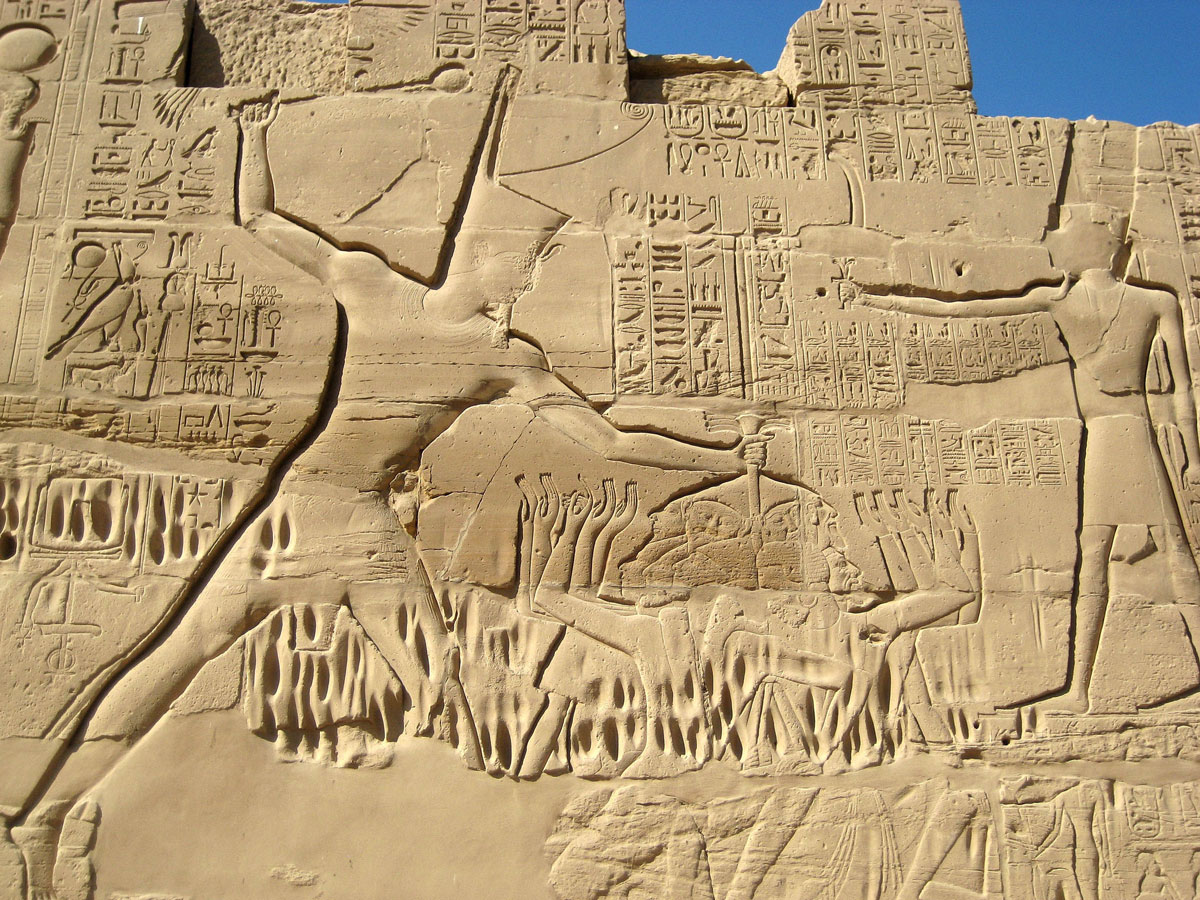
In 609 B.C., a confrontation was brewing between Egypt (led by Pharaoh Necho II) and the Babylonians (led by King Nabopolassar) who had conquered much of Assyria.
Necho II sent an army to meet up with the surviving Assyrian forces to battle the Babylonians. The Hebrew Bible claims that for Necho II to meet with the Assyrians he had to pass through the city of Megiddo, which was controlled by Judah (led by King Josiah). Necho II requested safe passage through Megiddo, but Josiah refused and fought the Egyptian force somewhere near Megiddo, leading to the defeat of Judah's army and Josiah's death in battle. Archaeological remains from this battle have not been found, and there is a debate among scholars as to whether this battle actually took place.
Maccabean Revolt
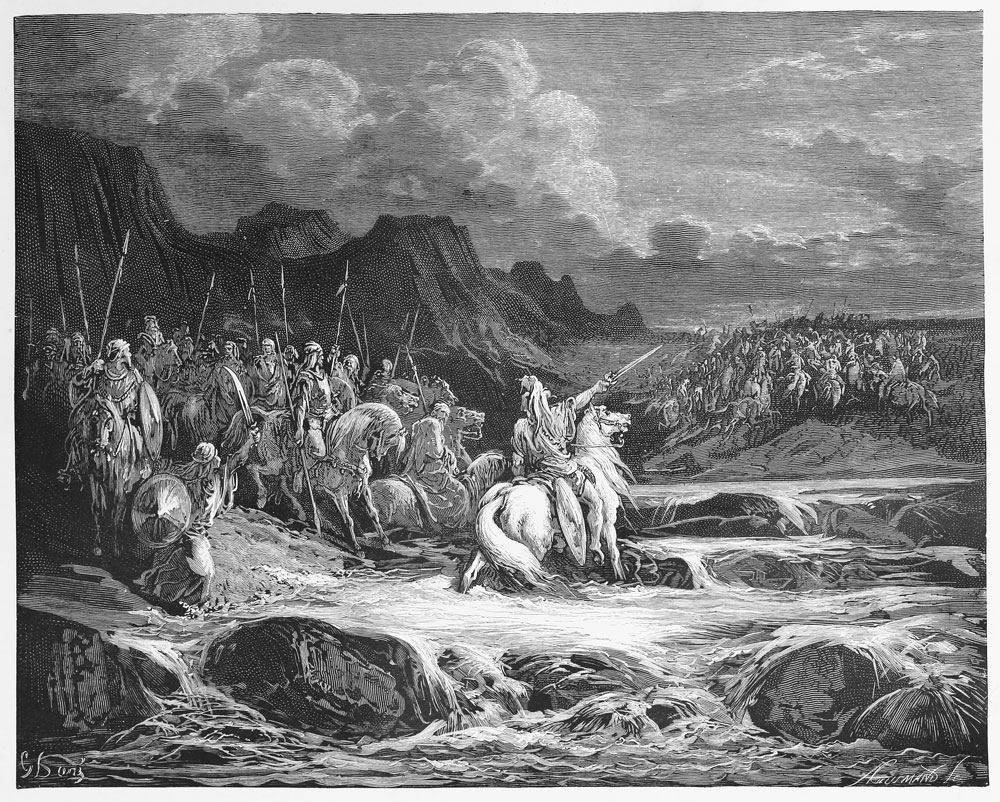
By A.D. 170, the area that was Israel and Judah was under the control of the Seleucid Empire, one of several empires that were created after the death of Alexander the Great in 323 B.C. The Seleucid Empire was growing weaker, and, between A.D. 170 and A.D. 160, a Jewish rebel army inflicted a series of revolts and defeats inflicted on the Seleucids, leading the Jewish people to regain their independence. A priest named Mattathias ben Johanan (died 165 B.C.) and his son Judas Maccabeus (died 160 B.C.) led the Jewish rebel army in the revolts.
A new Jewish dynasty, which historians call the Hasmonean Dynasty, was founded in this newly independent state. The Jewish temple, which had been sacked by the Babylonians, was rededicated, an event celebrated by Jews every year during Hanukkah.
Get the world’s most fascinating discoveries delivered straight to your inbox.

Owen Jarus is a regular contributor to Live Science who writes about archaeology and humans' past. He has also written for The Independent (UK), The Canadian Press (CP) and The Associated Press (AP), among others. Owen has a bachelor of arts degree from the University of Toronto and a journalism degree from Ryerson University.
